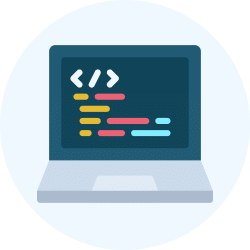Software Development Exam > Software Development Videos > Android Application Development (Mobile App) > Android Application Development Tutorial - 171 - OpenGl 2D vertices
Android Application Development Tutorial - 171 - OpenGl 2D vertices Video Lecture | Android Application Development (Mobile App) - Software Development
FAQs on Android Application Development Tutorial - 171 - OpenGl 2D vertices Video Lecture - Android Application Development (Mobile App) - Software Development
| 1. What is OpenGL in Android application development? |  |
Ans. OpenGL is a graphics library widely used in Android application development for rendering 2D and 3D graphics. It provides developers with a set of functions to create and manipulate graphical objects, such as vertices, textures, and shaders, allowing for the creation of visually appealing and interactive applications.
| 2. How can I implement 2D vertices in an Android application using OpenGL? |  |
Ans. To implement 2D vertices in an Android application using OpenGL, you need to follow these steps:
1. Set up an OpenGL context using the GLSurfaceView class.
2. Define the 2D vertices and their attributes, such as positions and colors.
3. Create a vertex buffer object (VBO) to store the vertex data efficiently.
4. Write shaders in GLSL (OpenGL Shading Language) to process the vertices and apply transformations.
5. Bind the VBO and shaders to the OpenGL context.
6. Use OpenGL functions to draw the vertices on the screen, taking into account transformations, such as scaling, rotation, and translation.
| 3. Can I use OpenGL for 3D graphics in Android applications as well? |  |
Ans. Yes, OpenGL is not limited to 2D graphics and can also be used for 3D graphics in Android applications. By defining 3D vertices, applying appropriate transformations, and using shaders, you can create and render complex 3D scenes and objects. OpenGL provides various features and functions specifically designed for 3D graphics, such as perspective projection, lighting, and texture mapping.
| 4. What are the benefits of using OpenGL in Android application development? |  |
Ans. There are several benefits of using OpenGL in Android application development, including:
1. Performance: OpenGL leverages the GPU (Graphics Processing Unit) to offload graphics rendering tasks, resulting in smoother and faster graphics performance.
2. Cross-platform compatibility: OpenGL is a widely supported standard across different platforms and devices, making it easier to develop applications that can run on various Android devices.
3. Flexibility: OpenGL provides developers with fine-grained control over graphics rendering, allowing for the creation of visually stunning and interactive applications.
4. Community and resources: As OpenGL is widely used, there is a large community of developers and abundant online resources available, including tutorials, forums, and libraries, making it easier to learn and troubleshoot any issues.
| 5. Are there any alternatives to OpenGL for graphics rendering in Android applications? |  |
Ans. Yes, there are alternative graphics rendering frameworks to OpenGL in Android application development. Some popular alternatives include Vulkan and Unity. Vulkan is a low-level graphics API that offers more control over the GPU and can provide better performance in certain scenarios. Unity, on the other hand, is a game engine that provides a high-level abstraction for graphics rendering and supports both 2D and 3D graphics. The choice of framework depends on the specific requirements and preferences of the application developers.
Related Searches















